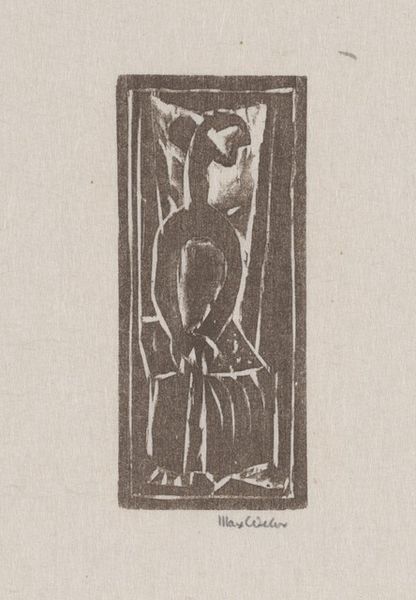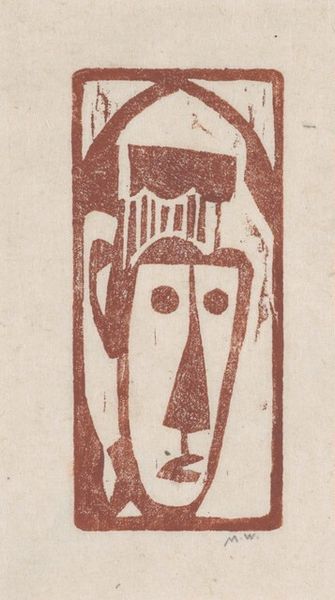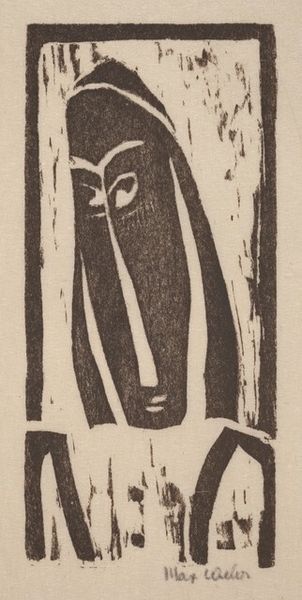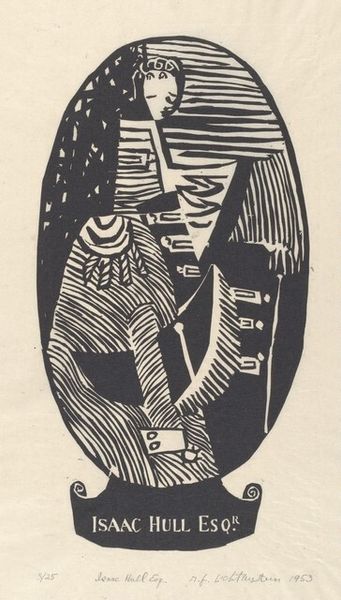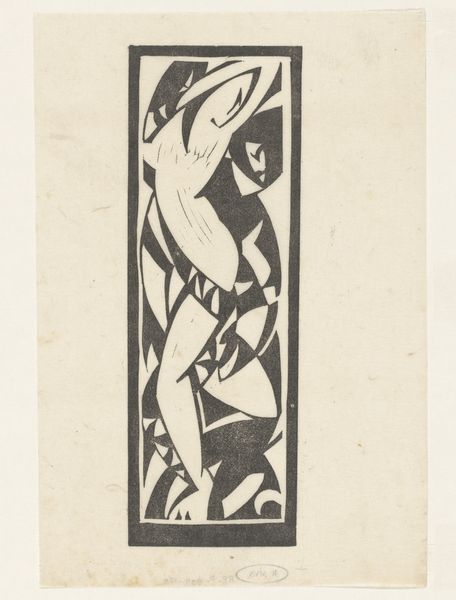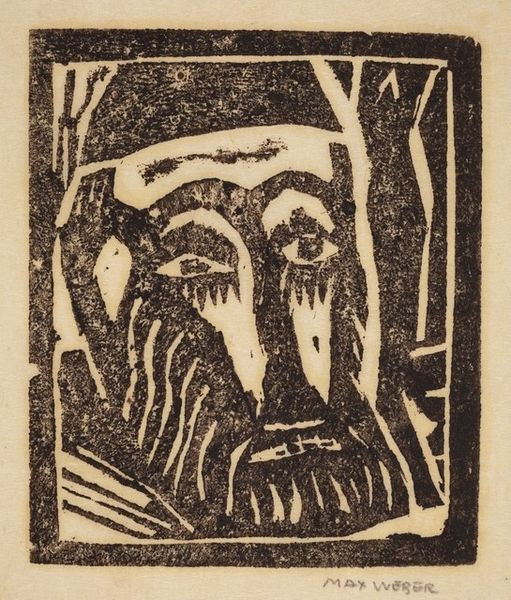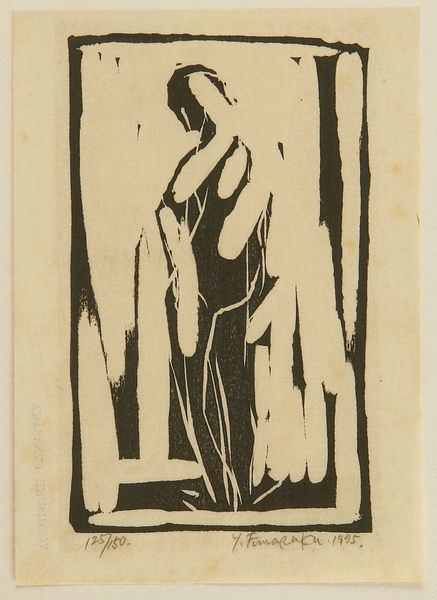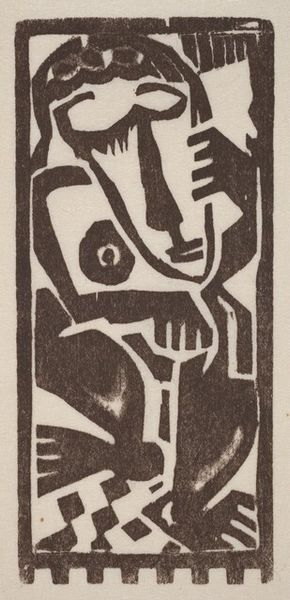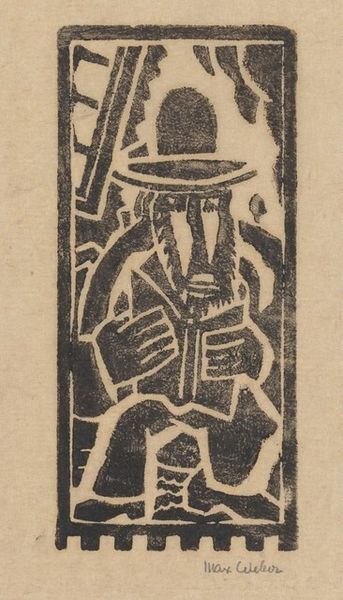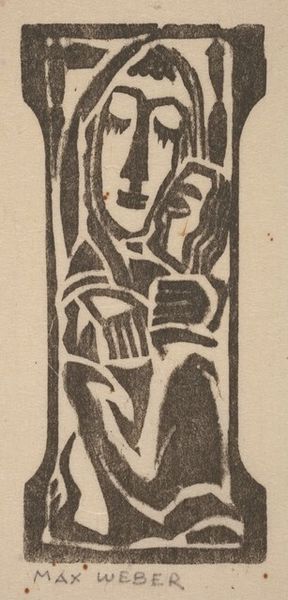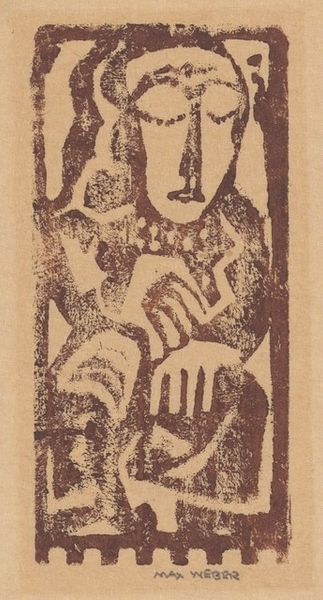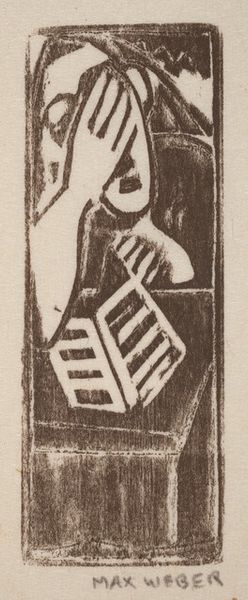
print, woodcut
# print
#
figuration
#
expressionism
#
woodcut
Dimensions: image: 8.41 × 3.18 cm (3 5/16 × 1 1/4 in.) sheet: 18.26 × 13.34 cm (7 3/16 × 5 1/4 in.)
Copyright: National Gallery of Art: CC0 1.0
Curator: This woodcut by Max Weber, entitled "Study," was created between 1919 and 1920, embodying the themes of figuration characteristic of Expressionism. What’s your initial response to this compelling image? Editor: Overwhelming oppression, perhaps, or immense grief. The figure’s face is obscured by a hand, as if shielding themself from something unbearable. The stark contrasts of the print amplify that feeling. Curator: Indeed. Note the deliberate use of negative space. The bold lines and sharp angles generate a sense of unease and inner turmoil. How might this stylistic approach speak to broader social or political currents? Editor: Knowing this was created shortly after World War I, the work seems a direct response to the trauma of the conflict. Perhaps this shielding gesture also represents the act of "blinding" one’s self to horrific facts. Consider, too, how Weber, an immigrant artist, likely navigated complicated dialogues around national identity during a period defined by conflict. Curator: The figure holds what looks like a barred book. Can we read into this a possible conflict? Or the sense that access to truth is restricted during traumatic periods? Editor: Absolutely. This composition evokes a powerful image of suppression. Whether this relates to gender inequality, censorship, or racial marginalization is debatable. Weber gives us an image open to multiple interpretations based on what each viewer brings to it. Curator: Focusing more closely on the composition, notice the lack of a clear, coherent background, which amplifies the sense of isolation surrounding the figure. We feel a psychological intensity from it. Editor: From an activist’s perspective, this is more than a formal arrangement; this piece serves as an artifact capable of eliciting deep conversation concerning the consequences of trauma and resistance. Curator: This brief "Study," then, presents both technical and conceptual complexities. Editor: Indeed. This artwork makes a claim against enforced ignorance. We need images like this in spaces that create safe dialogues.
Comments
No comments
Be the first to comment and join the conversation on the ultimate creative platform.

